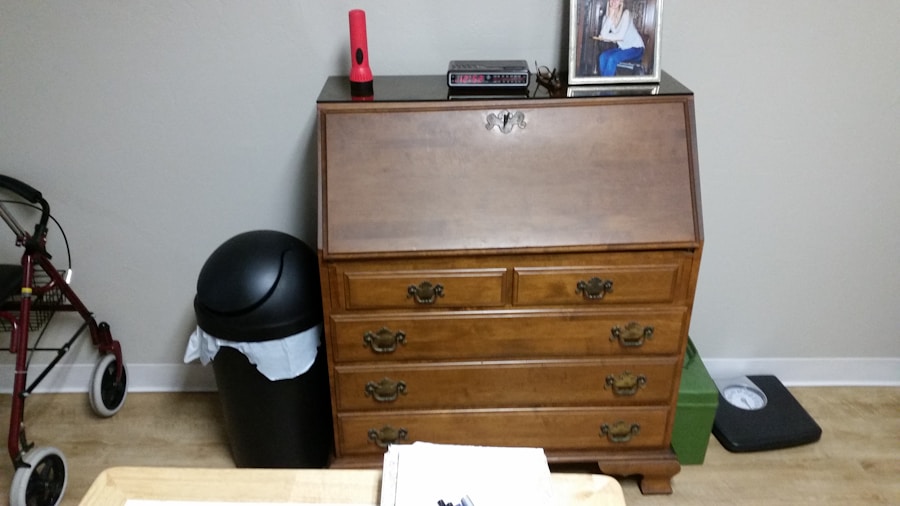Drawer organization is a crucial aspect of maintaining an efficient and functional workspace, whether at home or in a professional environment. The chaos of disorganized drawers can lead to wasted time, increased frustration, and a general sense of disorder. When drawers are cluttered, finding essential items becomes a daunting task, often resulting in unnecessary stress.
By implementing effective organization strategies, individuals can transform their drawers into well-structured spaces that enhance productivity and streamline daily tasks. The importance of drawer organization extends beyond mere aesthetics; it plays a significant role in fostering a conducive work environment. An organized drawer allows for quick access to tools, supplies, and documents, which can significantly improve workflow.
Moreover, a tidy workspace can have psychological benefits, promoting a sense of calm and control. As we delve into the various methods and tools available for drawer organization, it becomes evident that investing time in this area can yield substantial returns in efficiency and peace of mind.
Key Takeaways
- Drawer organization is essential for maintaining a tidy and efficient workspace.
- Drawer dividers and organizers help to separate and categorize items within a drawer.
- Desk drawer inserts provide additional compartments for storing small office supplies and accessories.
- File drawer solutions such as hanging file folders and file organizers help to keep important documents organized and easily accessible.
- Office supply drawer organizers are designed to neatly store and separate various office supplies such as pens, paper clips, and sticky notes.
Drawer Dividers and Organizers
Drawer dividers and organizers are essential tools for anyone looking to maintain order within their drawers. These products come in various shapes, sizes, and materials, allowing users to customize their organization systems according to their specific needs. For instance, plastic or bamboo dividers can be adjusted to fit different drawer dimensions, creating separate compartments for items such as utensils, office supplies, or craft materials.
This segmentation not only maximizes space but also ensures that each item has its designated place, reducing the likelihood of clutter. In addition to traditional dividers, there are also specialized organizers designed for particular items. For example, cutlery trays are specifically designed to hold forks, knives, and spoons in an orderly fashion, while makeup organizers feature compartments tailored for brushes, lipsticks, and palettes.
These targeted solutions help users maintain a clear overview of their belongings, making it easier to locate what they need without rummaging through a disorganized mess. Furthermore, many dividers are stackable or modular, allowing for flexibility as needs change over time.
Desk Drawer Inserts

Desk drawer inserts are another vital component of effective drawer organization. These inserts are designed to fit snugly within desk drawers, providing compartments for various office supplies such as pens, paper clips, sticky notes, and more. By utilizing desk drawer inserts, individuals can create a systematic approach to organizing their workspace essentials.
For example, a multi-compartment insert can separate writing instruments from adhesive materials, ensuring that everything is easily accessible when needed. Moreover, desk drawer inserts can be made from various materials such as plastic, wood, or metal, allowing users to choose options that best suit their aesthetic preferences and functional requirements. Some inserts even come with adjustable sections that can be resized to accommodate different items as needs evolve.
This adaptability is particularly beneficial in dynamic work environments where the types of supplies used may change frequently. By investing in quality desk drawer inserts, individuals can significantly enhance their productivity by minimizing distractions caused by disorganization.
File Drawer Solutions
File drawers are often the backbone of any organized office space, serving as the primary storage solution for important documents and paperwork. To maximize the efficiency of file drawers, it is essential to implement effective filing systems that allow for easy retrieval of information. One popular method is the use of hanging file folders, which can be color-coded or labeled according to categories such as client files, project documents, or financial records.
This visual organization not only simplifies the process of locating specific files but also helps maintain an orderly appearance within the drawer. In addition to hanging file folders, utilizing file boxes or magazine holders can further enhance file drawer organization. These containers can be used to store less frequently accessed documents or reference materials that do not require immediate access.
By keeping these items neatly contained within designated boxes or holders, users can free up valuable space in their primary file drawers while still maintaining an organized system. Furthermore, incorporating a regular review process for files—such as purging outdated documents—can help ensure that the file drawer remains manageable and relevant over time.
Office Supply Drawer Organizers
An office supply drawer organizer is an indispensable tool for anyone who relies on various supplies to complete their work tasks efficiently. These organizers come equipped with multiple compartments designed specifically for items like staplers, tape dispensers, scissors, and notepads. By categorizing these supplies into designated sections within the drawer, users can quickly locate what they need without wasting precious time searching through a jumble of materials.
The versatility of office supply drawer organizers allows them to be tailored to individual preferences and workflows. For instance, some individuals may prefer a minimalist approach with only a few essential items stored in their organizer, while others may require a more comprehensive setup that accommodates a wider range of supplies. Additionally, many organizers are designed with removable trays or adjustable dividers that allow users to customize their layout based on changing needs or preferences.
This adaptability ensures that the office supply drawer remains functional and relevant as work demands evolve.
Junk Drawer Organization

The infamous junk drawer is a common feature in many homes and offices—a catch-all space where miscellaneous items accumulate over time. While it may seem daunting to tackle this chaotic space, effective junk drawer organization can transform it into a functional area that serves a purpose rather than simply housing clutter. The first step in organizing a junk drawer is to empty its contents completely and categorize items into groups such as tools, batteries, cords, and miscellaneous odds and ends.
Once categorized, individuals can utilize small bins or containers within the drawer to keep similar items together. For example, a small bin could hold batteries while another could contain various tools like screwdrivers and tape measures. Labeling these bins can further enhance organization by providing clear identification of contents at a glance.
Additionally, incorporating a periodic review process—perhaps every few months—can help prevent the junk drawer from becoming overwhelmed again. By regularly assessing what is stored within the drawer and removing unnecessary items, individuals can maintain an organized space that serves its intended purpose.
Drawer Labels and Indexing
Labeling is an often-overlooked aspect of drawer organization that can significantly enhance efficiency and ease of use. By clearly labeling each compartment or section within a drawer, individuals can quickly identify where specific items are stored without having to dig through multiple containers. This practice is particularly beneficial in shared spaces where multiple users may access the same drawers; clear labels help ensure that everyone knows where to find what they need and where to return items after use.
There are various labeling methods available depending on personal preferences and the nature of the items being organized. For instance, adhesive labels can be printed with clear descriptions using a label maker or handwritten for a more personal touch. Alternatively, using color-coded labels can provide visual cues that make it easier to locate items quickly.
In addition to labeling individual compartments within drawers, creating an index or inventory list of contents can further streamline the organization process. This list can be kept inside the drawer or stored digitally for easy reference.
Conclusion and Tips for Maintaining Organized Drawers
Maintaining organized drawers requires ongoing effort and commitment but yields significant benefits in terms of efficiency and productivity. One effective strategy is to establish a routine for decluttering and reorganizing drawers periodically—perhaps once every few months—to ensure that items remain in their designated places and that unnecessary clutter does not accumulate over time. This proactive approach helps individuals stay ahead of potential disorganization before it becomes overwhelming.
Another useful tip is to adopt the “one in, one out” rule when adding new items to drawers; for every new item introduced into the space, an old item should be removed. This practice not only helps maintain available space but also encourages mindful consumption of supplies and materials. Additionally, investing in quality organizational tools—such as dividers, inserts, and labels—can make a significant difference in maintaining order over time.
By prioritizing drawer organization and implementing these strategies consistently, individuals can create functional spaces that enhance their overall productivity and well-being in both personal and professional settings.
If you are looking to create a productive workspace with interior office design, you may want to consider incorporating smart office technology into your office. This can help streamline processes and improve efficiency. Additionally, ergonomic furniture can maximize comfort for employees, leading to increased productivity. To learn more about how smart office technology can enhance your office space, check out this article on workplace with smart office technology.
FAQs
What is a drawer for office?
A drawer for office is a storage unit typically found in desks or filing cabinets that is used to store office supplies, documents, and other items.
What are the different types of office drawers?
There are various types of office drawers, including pencil drawers, file drawers, and utility drawers. Pencil drawers are designed to store small office supplies, while file drawers are used to store documents and files. Utility drawers are versatile and can be used to store a variety of office items.
What materials are office drawers made of?
Office drawers are commonly made of materials such as wood, metal, or plastic. Wood drawers are often found in traditional office furniture, while metal and plastic drawers are more commonly used in modern office settings.
How do you organize an office drawer?
To organize an office drawer, start by decluttering and removing any unnecessary items. Use dividers or organizers to separate different types of items, such as pens, paper clips, and sticky notes. Labeling items can also help keep the drawer organized.
What are the benefits of using office drawers?
Office drawers help keep the workspace organized and free of clutter. They also provide a convenient and accessible storage solution for office supplies and documents, making it easier to find and retrieve items when needed.


